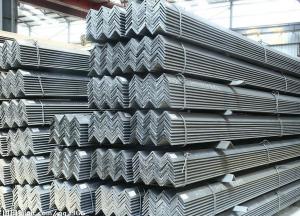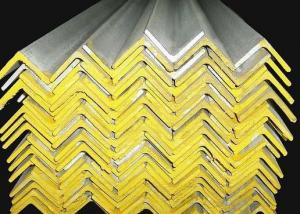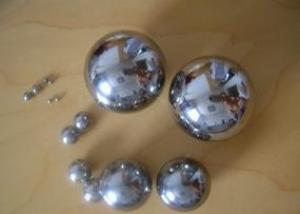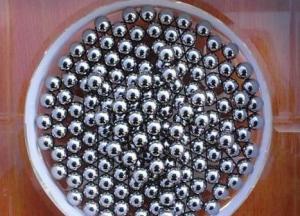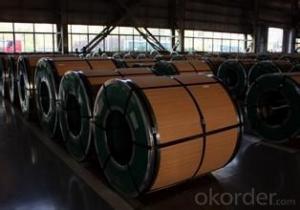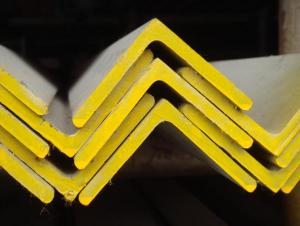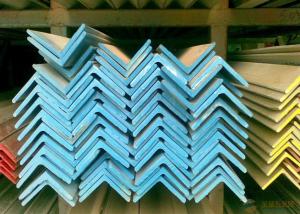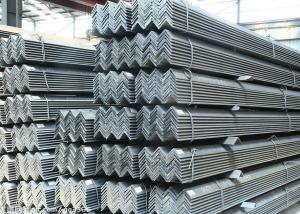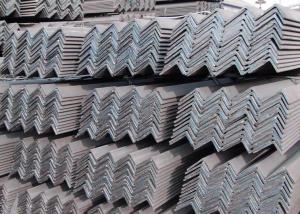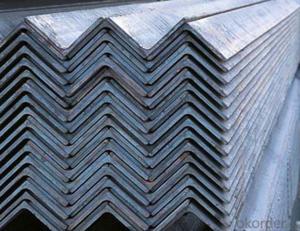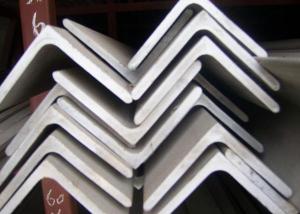Best Quality for 304 Equal Stainless Steel Angles
- Loading Port:
- China Main Port
- Payment Terms:
- TT or LC
- Min Order Qty:
- 5 Tons m.t.
- Supply Capability:
- 1000 Tons Per Month m.t./month
OKorder Service Pledge
OKorder Financial Service
You Might Also Like
Stainless Steel Angles
General Information of Stainless Steel Angles
1. Grade: SS200, 300,400 series
2. Size: 25×25×3 mm-100×100×10mm
3. Process: HRAP
4. Length: 2-6m
5. Shape: Equal
6. Delivery: within 20 days
7. MOQ: 1 ton
8. Certificate: ISO 9001:2008, SGS
9. Package: Standard Export Packing, or put into wooden boxes according to your requirement
10. Application: Construction, Marine, Industry and so on
Specification of Stainless Steel Angles
Name | Stainless Steel Angles | |||||
Standard | ASTM A554, A312, A249, A269 and A270 | |||||
Material Grade | 304,316,201,202, 316L,430 | |||||
Length | 6m or as customers' request | |||||
Tolerance | a) Thickness: +/-0. 15mm | |||||
b) Length: +/-4. 5mm - 0mm | ||||||
Surface | 180G, 320G, 400G Satin / Hairline(Matt Finish, Brush, Dull Finish) 400G, 500G, 600G or 800G Mirror finish | |||||
Application | Decoration construction, upholstery, industry instruments | |||||
Test | Squash test, Extended test, Water pressure test, Crystal rot test, Heat treatment, NDT | |||||
Chemical Composition of Material | Composition Material | 201 | 202 | 304 | 316L | 430 |
C | ≤0.15 | ≤0.15 | ≤0.08 | ≤0.08 | ≤0.12 | |
Si | ≤1.00 | ≤1.00 | ≤1.00 | ≤1.00 | ≤1.00 | |
Mn | 5.5-7.5 | 7.5-10 | ≤2.00 | ≤2.00 | ≤1.00 | |
P | ≤0.06 | ≤0.06 | ≤0.045 | ≤0.045 | ≤0.040 | |
S | ≤0.03 | ≤0.03 | ≤0.030 | ≤0.030 | ≤0.030 | |
Cr | 16-18 | 17-19 | 18-20 | 16-18 | 16-18 | |
Ni | 3.5-5.5 | 4-6 | 8-10.5 | 10-14 | ||
Mo | 2.0-3.0 | |||||
Mechanical Property | Material Item | 201 | 202 | 304 | 316L | |
Tensile Strength | ≥535 | ≥520 | ≥520 | ≥520 | ||
Yield Strength | ≥245 | ≥205 | ≥205 | ≥205 | ||
Extension | ≥30% | ≥30% | ≥35% | ≥35% | ||
Hardness (HV) | <253 | <253 | <200 | <200 | ||
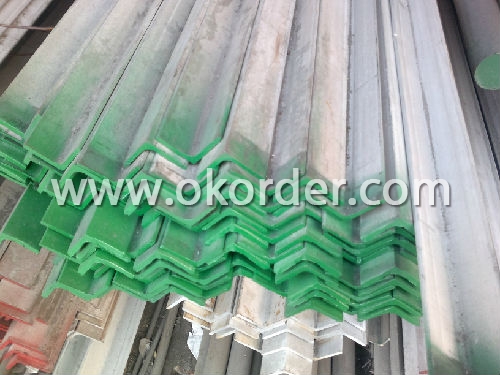

- Q:What are the machining techniques used for stainless steel angle?
- There are several machining techniques that can be used for stainless steel angle. 1. Turning: This process involves rotating the stainless steel angle against a cutting tool to remove material and create the desired shape. It is commonly used for cutting and shaping the outside diameter of the angle. 2. Milling: Milling involves using a rotating cutting tool to remove material from the stainless steel angle. It can be used to create slots, pockets, and other complex shapes on the surface of the angle. 3. Drilling: Drilling is a common machining technique used to create holes in stainless steel angle. It involves rotating a cutting tool called a drill bit against the angle to remove material and create the desired hole. 4. Tapping: Tapping is used to create internal threads in stainless steel angle. It involves rotating a cutting tool called a tap into a pre-drilled hole, which cuts threads into the material. 5. Grinding: Grinding is a machining technique used to smooth the surface of stainless steel angle. It involves using a rotating abrasive wheel to remove material and create a smooth, polished finish. 6. Bending: Bending is a technique used to shape stainless steel angle by applying force to it. This can be done through various methods such as press bending, roll bending, or heat bending. 7. Laser cutting: Laser cutting is a precise and efficient machining technique used to cut stainless steel angle. It involves using a high-powered laser beam to melt and vaporize the material along a predetermined path, creating the desired shape. These are just a few examples of the machining techniques that can be used for stainless steel angle. The specific technique chosen will depend on the desired outcome, precision requirements, and the equipment and expertise available.
- Q:Can stainless steel angles be painted or coated?
- Stainless steel angles have the capability to be painted or coated, albeit it is noteworthy that stainless steel possesses inherent corrosion resistance, therefore eliminating the necessity for a protective coating similar to other metals. Should you opt to paint or coat stainless steel angles, it is imperative to utilize a paint or coating that is expressly formulated for stainless steel, guaranteeing appropriate adhesion and longevity. Moreover, before applying any paint or coating, it is crucial to adequately clean and prepare the surface of the stainless steel to ensure optimal outcomes.
- Q:What is the difference between 316L and 316Ti stainless steel angles?
- 316L and 316Ti, both variations of stainless steel grade 316, exhibit distinct differences. 316L stainless steel angle is characterized by its low carbon content, rendering it less susceptible to sensitization. Sensitization refers to the formation of chromium carbides at grain boundaries, leading to diminished corrosion resistance. Consequently, 316L is commonly employed in environments necessitating significant corrosion resistance, such as marine settings or chemical processing plants. On the other hand, 316Ti stainless steel angle incorporates titanium as a stabilizing element. This addition effectively prevents the formation of chromium carbides, even under high temperatures. Consequently, 316Ti boasts improved corrosion resistance, making it suitable for applications involving elevated temperatures, including heat exchangers or furnace components. To summarize, the primary disparity between 316L and 316Ti stainless steel angles lies in their carbon content and the inclusion of titanium. 316L represents a low carbon variant with commendable corrosion resistance, while 316Ti harnesses titanium for enhanced corrosion resistance under high temperatures. The selection between the two hinges upon the specific requirements and conditions of the intended application.
- Q:How do you measure the thickness of a stainless steel angle?
- To measure the thickness of a stainless steel angle, you would typically use a caliper or a micrometer. These tools are specifically designed to measure the thickness of various materials with precision. To begin, make sure that the stainless steel angle you are measuring is clean and free from any debris or contaminants. Place the angle on a flat surface and ensure that it is stable and not wobbling. Next, adjust the caliper or micrometer to the appropriate measurement range. If using a caliper, open the jaws wide enough to fit around the thickness of the stainless steel angle. If using a micrometer, set the thimble to zero or the starting position. With the caliper or micrometer ready, gently close the jaws or anvils around the stainless steel angle, making sure to apply even pressure. Take care not to deform or damage the angle during the measurement process. Once the jaws or anvils are securely around the angle, lock the caliper or micrometer in place. Read the measurement displayed on the tool's scale or digital display. This measurement represents the thickness of the stainless steel angle in the unit of measurement chosen on the tool. If you require a more accurate measurement, you can repeat the process multiple times and calculate an average thickness. Remember to record your measurement(s) for future reference or documentation purposes. It is important to note that the accuracy of the measurement depends on the quality and precision of the caliper or micrometer being used. Regular calibration and maintenance of these tools are essential to ensure accurate measurements.
- Q:What is the maximum length available for stainless steel angles?
- The maximum length available for stainless steel angles can vary depending on the manufacturer and supplier, but it is typically around 20 feet or 6 meters.
- Q:How do stainless steel angles resist corrosion?
- Stainless steel angles resist corrosion due to their unique composition that includes a minimum of 10.5% chromium. This chromium content forms a thin, invisible, and self-healing oxide layer on the surface of the stainless steel, known as the passive layer. This passive layer acts as a protective barrier, preventing oxygen and moisture from reaching the underlying metal and thus preventing corrosion. Additionally, the presence of other alloying elements, such as nickel and molybdenum, enhances the corrosion resistance of stainless steel angles, making them highly resistant to rust and corrosion in various environments.
- Q:What is the difference between annealed and tempered stainless steel angles?
- Both annealed and tempered stainless steel angles are types of stainless steel that have undergone specific heat treatments, but they differ in terms of their mechanical properties and applications. Annealed stainless steel angles have been heated to a specific temperature and then slowly cooled to room temperature. This process, known as annealing, relieves internal stresses and improves the ductility and workability of the stainless steel. Annealed stainless steel angles are typically softer and less brittle than tempered stainless steel angles. They are easier to bend, shape, and weld, making them suitable for applications that require extensive forming or fabrication, such as architectural and decorative uses. On the other hand, tempered stainless steel angles have been heated to a specific temperature and then rapidly cooled, usually by quenching in water or oil. This rapid cooling process, known as tempering, increases the hardness and strength of the stainless steel. Tempered stainless steel angles are harder and more resistant to wear and abrasion than annealed stainless steel angles. They are commonly used in applications that require high strength and durability, such as structural supports, machinery components, and industrial equipment. To summarize, annealed stainless steel angles are softer and more malleable, making them suitable for forming and fabrication, while tempered stainless steel angles are harder and more resistant to wear, making them suitable for high-strength applications. The choice between annealed and tempered stainless steel angles depends on the specific requirements of the application and the desired mechanical properties.
- Q:What is the torsional strength of stainless steel angles?
- The torsional strength of stainless steel angles depends on various factors such as the alloy composition, manufacturing process, and dimensions of the angle. Generally, stainless steel angles have good torsional strength due to their high tensile strength and resistance to deformation under twisting forces. However, the specific torsional strength value would need to be determined based on the specific grade and specifications of the stainless steel angle in question.
- Q:What is the resistance to thermal expansion of stainless steel angles?
- The resistance to thermal expansion of stainless steel angles is relatively high compared to other materials, due to the composition and properties of stainless steel.
- Q:What are the different types of stainless steel used for angles?
- There are several types of stainless steel commonly used for angles, including 304, 316, and 430. These different types offer varying levels of corrosion resistance, strength, and durability, allowing for a wide range of applications in industries such as construction, manufacturing, and engineering.
1. Manufacturer Overview |
|
|---|---|
| Location | Jiangsu, China |
| Year Established | 2010 |
| Annual Output Value | above US$3 million |
| Main Markets | East Asia, Middle East. |
| Company Certifications | |
2. Manufacturer Certificates |
|
|---|---|
| a) Certification Name | |
| Range | |
| Reference | |
| Validity Period | |
3. Manufacturer Capability |
|
|---|---|
| a)Trade Capacity | |
| Nearest Port | Shanghai |
| Export Percentage | 50% |
| No.of Employees in Trade Department | above 10 people |
| Language Spoken: | English, Chinese |
| b)Factory Information | |
| Factory Size: | about 50000 square meter |
| No. of Production Lines | above 3 |
| Contract Manufacturing | OEM Service Offered |
| Product Price Range | Average |
Send your message to us
Best Quality for 304 Equal Stainless Steel Angles
- Loading Port:
- China Main Port
- Payment Terms:
- TT or LC
- Min Order Qty:
- 5 Tons m.t.
- Supply Capability:
- 1000 Tons Per Month m.t./month
OKorder Service Pledge
OKorder Financial Service
Similar products
New products
Hot products
Related keywords

